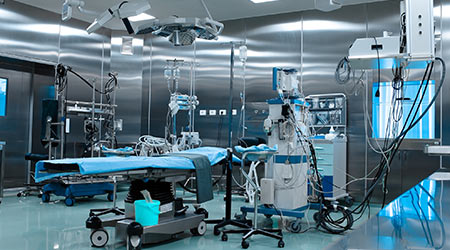
High-tech tools have armed facilities with new weapons to kill pathogens, according to an article on the Outpatient Surgery website. For instance, one hospital had 81 cases of hospital-acquired Clostridium difficile (C.diff) last year, but is on pace to have one-third fewer hospital-acquired infections of all kinds this year.
The decrease is being attributed to the whole-room disinfection technologies the facility had added to its manual cleaning processes.
The whole-room disinfection works like this: At the end of a day or every 24 hours — whichever comes first — each operating room undergoes a top-to-bottom, floor-to-ceiling, edge-to-center terminal clean. This terminal clean is in addition to the environmental cleaning schedules that occur between patient cases - and it’s important to note that one method does not replace the other.
Steps for the whole-room disinfection include using each disinfecting agent according to the manufacturer's instructions and being sure to leave adequate dwell time for proper disinfection.
For additional steps, and to read this full article, click here.

 The Down and Dirty on Cleaning in Virus Season
The Down and Dirty on Cleaning in Virus Season How Surfactant Use is Expanding in Commercial Cleaning
How Surfactant Use is Expanding in Commercial Cleaning